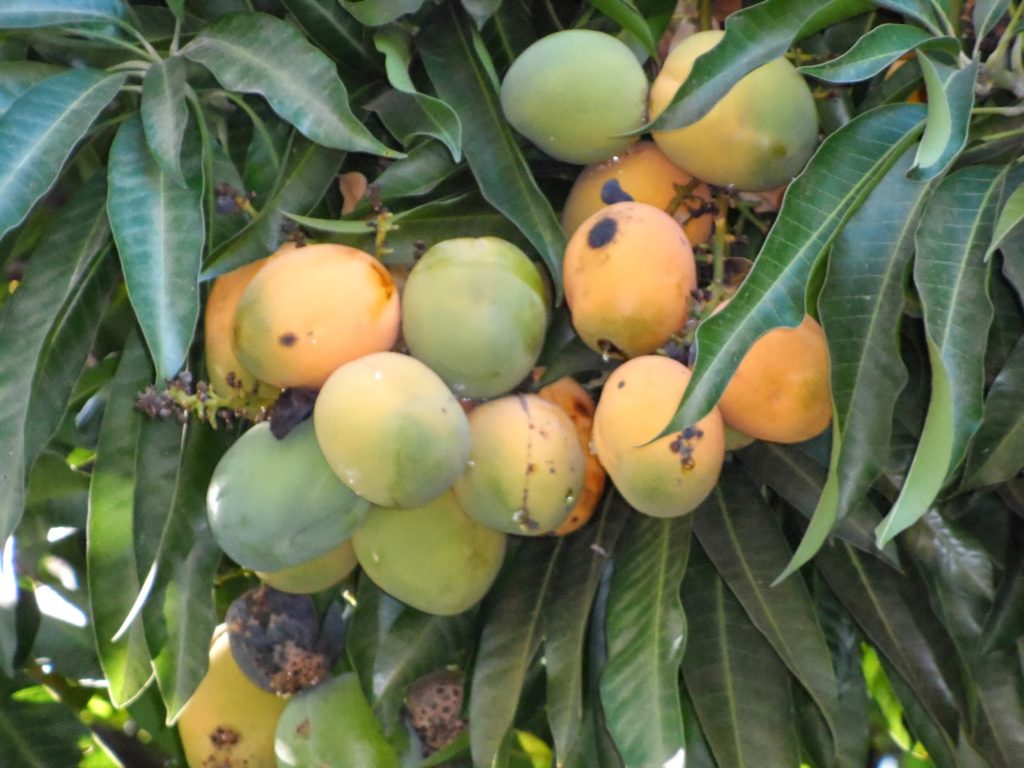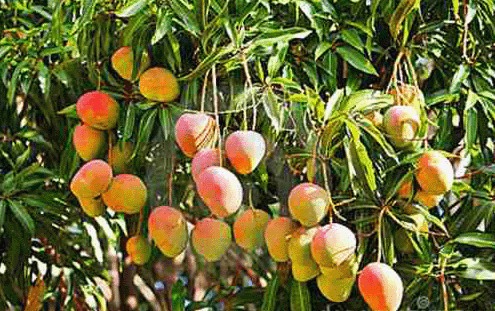 LEGENDS: EL CANEY, CUBA, SWEET PRODUCT OF A KIDNAPPING.
LEGENDS: EL CANEY, CUBA, SWEET PRODUCT OF A KIDNAPPING.
In India the mango is very venerated. That is why it is considered a transformation of “Prajapati, Lord of the Creatures”, deity that presides over procreation. In western culture this fruit is also linked to myths and legends. Such is the case of Cuba and its mangoes from El Caney, in the east of the country.
THE LEGEND.
According to the legend, in 1902 the Spanish sailor José Burgos lived in that place and one day he decided to travel to the Dominican Republic because his ex-wife and daughter lived there. The little girl was only two years old and the father, eager to share with her, asked the mother for permission to let him take her for a walk. The woman agreed to the request.
This is how the girl came to Cuba, because Burgos never returned her to her home. That walk was just the pretext to kidnap her and bring her to live in the largest archipelago of the Antilles.
Little is said about the sadness of the legend. Maybe the new territory caused curiosity and encouragement to live it, or maybe it was a radical change that affected her sentimentally … The truth is that the girl was one of the protagonists of this story, because her mother, when leaving the house She put two mangoes in a bag in case the snack schedule surprised her on the street. And since his daughter never returned to the Dominican Republic, the seeds of the fruit germinated in the fertile lands of El Caney, where José Burgos had a conuco on his property where he planted them on his farm in Zacatecas, a town near El Caney.
In addition, according to other sources, mango producer and researcher Rodolfo Borges, who lives on the farm ‘La Dolorita’ in Zacatecas, says that the mango ‘Bizcochuelo’ was brought from Santo Domingo by his family at the beginning of the 20th century and the seeds planted in El Caney, where you can still find the oldest mango tree of this variety in Cuba, which is more than 100 years old. According to, citing journalistic sources, Borges (José Burgos’ relative) said that the kidnapped girl was called Constancia, she was her aunt-grandmother and she never denied the legend of which she was the protagonist.
THE RICO CONTROL OF BIZCOCHUELO.
According to they tell, the first fruits occurred in the year 1905 and five years later already they had certain fame. In fact, many producers went there only to acquire the seeds of the sweetest fruit. According to historians who have researched in this regard, in 1918 an American scientist, specialist in soil, came to El Caney to check everything that was said about the region, also known as the Paradise of tropical fruits. When tasting the mangoes he compared them with biscuits and since then, that species is known as “Bizcochuelo”.
A hardy perennial tree that can live for more than 100 years, the Bizcochuelo tree can reach a height of up to 20 m, is medium or large, oval or heart-shaped, weighs 230-402 grams and has juicy flesh, but not overly juicy. The meat is golden yellow, very sweet but not sickly, and it is aromatic, so it is excellent both for the table and to elaborate processed products, especially slices and jams. The skin does not acquire an intense red color when ripe and, when it is ripe, the fruit acquires a fine yellow color, subtle and always appetizing.
The crops in this land of Caney near Santiago de Cuba greatly increased its fame thanks to a song written by Felix B. Caignet and popularized by the Matamoros Trio: “… Frutas, who wants to buy me fruits, harvested in the hills of Caney. Sweets like honey … ”
 LEYENDAS: EL CANEY, CUBA, DULCE PRODUCTO DE UN SECUESTRO.
LEYENDAS: EL CANEY, CUBA, DULCE PRODUCTO DE UN SECUESTRO.
En la India el mango es muy venerado. Es por ello que se le considera una transformación de “Prajapati, Señor de las Criaturas”, deidad que preside la procreación. En la cultura occidental esta fruta también está vinculada a mitos y leyendas. Tal es el caso de Cuba y sus mangos de El Caney, en el oriente del país.
LA LEYENDA.
Según cuenta la leyenda, en el año 1902 vivía en aquel lugar el marino español José Burgos quien un día decidió viajar a República Dominicana porque allá vivía su exesposa y su hija. La pequeña solo tenía dos años y el padre, deseoso de compartir con ella, le pidió permiso a la madre para que lo dejara llevársela a pasear un rato. La mujer accedió a la petición.
Fue así como la niña vino a parar a Cuba, pues Burgos jamás la devolvió a su hogar. Aquel paseo fue solo el pretexto para secuestrarla y traerla a vivir al mayor archipiélago de las Antillas.
De las tristezas de la pequeña se habla poco en la leyenda. Quizás el nuevo territorio le causaba curiosidad y ánimos para vivirlo, o tal vez fue un cambio radical que la afectó sentimentalmente… Lo cierto es que la niña fue una de las protagonistas de esta historia, debido a que su madre, al salir de la casa, le echó en una bolsa dos mangos por si el horario de la merienda la sorprendía en la calle. Y como su hija nunca más regresó a República Dominicana, las semillas de la fruta germinaron en las fértiles tierras de El Caney, donde José Burgos tenía un conuco de su propiedad donde los plantó en su granja en Zacatecas, un pueblo cerca de El Caney.
Además, según otras fuentes, el productor e investigador de mango Rodolfo Borges, que vive en la finca ‘La Dolorita’ en Zacatecas, afirma que el mango de ‘Bizcochuelo’ fue traído de Santo Domingo por su familia a principios del siglo XX y las semillas plantadas en El Caney, donde aún se puede encontrar el árbol de mango más antiguo de esta variedad en Cuba, que tiene más de 100 años. Segun, citando fuentes periodisticas, Borges (pariente de José Burgos) aseguró que la niña secuestrada llevaba por nombre Constancia, era su tía-abuela y nunca desmintió la leyenda de la cual fue protagonista.
EL RICO MANDO DE BIZCOCHUELO.
Según cuentan, los primeros frutos se dieron en el año 1905 y cinco años después ya tenían cierta fama. De hecho, muchos productores iban hasta allí sólo para adquirir las semillas de la dulcísima fruta. De acuerdo con los historiadores que han investigado al respecto, en 1918 una científica norteamericana, especialista en suelos, llegó hasta El Caney para comprobar todo lo que se decía sobre la región, conocida también como el Paraíso de las frutas tropicales. Al probar los mangos los comparó con bizcochos y desde entonces, aquella especie se conoce como “Bizcochuelo”.
Un árbol perenne resistente que puede vivir por más de 100 años, el árbol del Bizcochuelo puede alcanzar una altura de hasta 20 m., es de mediano o grande, ovalado o en forma de corazón, pesa 230-402 gramos y tiene carne jugosa, pero no excesivamente jugosa. La carne es de color amarillo dorado, muy dulce pero no enfermiza, y es aromática, por lo que es excelente tanto para la mesa como para elaborar productos procesados, especialmente tajadas y mermeladas. La piel no adquiere un color rojo intenso al madurar y, cuando está madura, la fruta adquiere un color amarillo fino, sutil y siempre apetitoso.
Los cultivos en esta tierra del Caney cerca de Santiago de Cuba aumentaron mucho su fama gracias a una canción escrita por Félix B. Caignet y popularizada por el Trío Matamoros: “…Frutas, quien quiere comprarme frutas, cosechadas en las lomas del Caney. Dulces como miel…”
Agencies/Radio Enciclop/ Laura Barrera/ Various/ Internet Photos/ Arnoldo Varona/ TheCubanHistory.com
THE CUBAN HISTORY, HOLLYWOOD.









